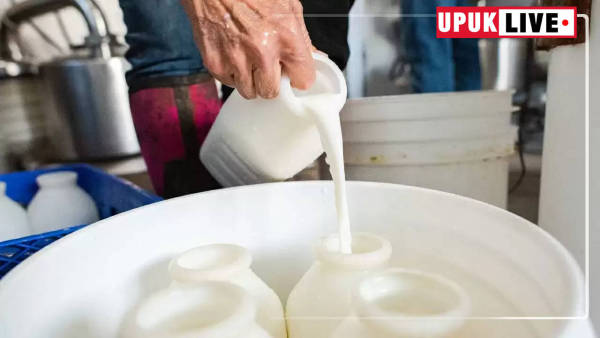
UPUKLive, 18 Oct 2024, New Delhi: In the greed of earning more at less cost, food items are being sold adulterated indiscriminately all over the world. Nowadays, adulteration is being done in everything from milk to grains and from cumin to tea leaves. It is common to deliberately add water to milk, starch to butter, or adulterate lower quality grains with better quality grains.
While chalk powder is mixed in flour, sand or stones are added to it to increase the weight of pulses.
effect on health
Adulteration in food items has a direct impact on our health. According to the report of a study published in 2023 in the journal Foods Journal, people who regularly consume adulterated food items become easy victims of diarrhea, heart diseases, allergies, dizziness and diabetes etc. Consuming too much or very harmful adulterated food also increases the risk of food poisoning and stomach problems.
Identify adulteration like this
Milk: Add a drop of milk on a smooth surface. If the milk goes down without leaving its mark, it means that your milk is adulterated with water. At the same time, if thick foam is forming in the milk after mixing or stirring it too much, then it means that the milk coming to your house has detergent mixed in it.
Honey: Add a few drops of honey in a glass of water. If honey collects at the bottom of the water, it means it is pure. On the other hand, if there is sugar adulteration in honey then it will dissolve completely in water.
Turmeric and chilli powder: Mix one spoon turmeric powder in a glass of lukewarm water. Pure turmeric will collect at the bottom of the glass and the water will remain transparent. If the color of the water changes after adding turmeric powder, it means that the turmeric is adulterated. Similarly, red chilli powder will also collect at the bottom of hot water, whereas adulterated chilli powder will leave its mark in the water.
tea and coffee: Spread some tea leaves on wet blotting paper. If a yellow or orange mark appears on the blotting paper, it means that some color has been added to the tea. To test the coffee powder, put a little coffee powder in water. Pure coffee will float in water, while adulterated coffee will collect at the bottom of the glass.
Vegetables: To check for adulterated colors in green leafy vegetables, dip a cotton ball in water or vegetable oil and rub it on the vegetable. If the color of the cotton changes, it means that artificial color has been used in the vegetable.
Wheat: To check adulteration in wheat flour, mix one spoon of flour in a cup of water. Pure flour will settle to the bottom of the water, while adulterated flour will muddy the water.
Butter: Put some butter in a spoon and melt it. Pure butter will melt immediately and turn brown, whereas impure butter will not only take longer to melt but will also leave a white residue.
Fruit: To check adulteration in banana, pour a few drops of water on it. If the color of that place turns brown after adding water, it means that artificial agents like calcium carbide have been used to ripen the banana quickly.
Oil: To check the purity of coconut oil, keep some oil in the refrigerator. If the oil solidifies it means it is pure. Adulterated coconut oil will not freeze. To check the purity of other oils, put a drop of oil on your palm and rub it with both hands. The skin will easily absorb pure oil.